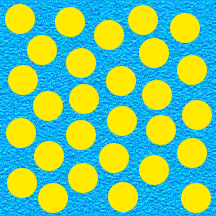
metal clay
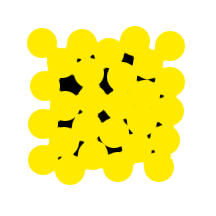
sintered
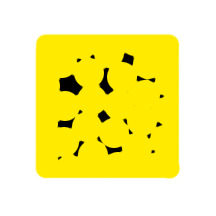
burnished



Metal clay (or precious metal clay) is used to make jewelry, small sculptures, or beads. Metal clay looks and acts like regular modeling clay, but is made from small particles of metal, water, and binder to hold it all together. The metal may be silver, gold, platinum, bronze, copper, or steel.
Pieces made from metal clay can be changed into metal objects. The completed metal clay piece is dried, then brought to a high temperature (fired). After it is fired at the correct temperature, only the metal remains—the piece is 100% metal.
Some metal clays are made from pure metal, and some are alloysAn alloy is a mixture of a metal with one or more metals or nonmetals.. An alloy has different properties than the original metal. If a metal is soft, adding a small amount of another metal can make the metal stronger.
Gold metal clay is made with pure gold and silver. Gold jewelry is measured in carats or karats (k), where 24 karat (24k) gold is pure gold. Pure gold is a soft metal, so gold jewelry is usually made from gold combined with other metals such as silver, copper, or nickel. This gold jewelry is often 22k, 18k, or 14k. Metal clay is available in 22k gold, or 91.7% gold and 8.3% silver.
Silver metal clay is made with pure silver. Silver jewelry is often made of sterling silver; which is mostly silver along with other metals. For instance, sterling silver may contain 92.5% silver and 7.5% copper. Pure silver is not as strong as sterling silver.
Bronze metal clay is made with copper along with other metals. For instance, bronze may contain 89% copper and 11% tin. Copper clay is made with pure copper. Steel clay contains mostly iron. Pieces made from bronze, copper, or steel clay are quite strong.
There are several brands of metal clay. Different brands of one type of metal clay (such as copper) may recommend different firing methods or firing schedules.
Some metal clays are sold as a powder that includes metal particles and binder. This powder must be mixed with water to make metal clay. Others are available in lump form; and may also be sold as paste/slip, oil paste, syringe, or sheet/paper.
Silver
Art Clay Silver Standard
Art Clay Silver Standard Slow Dry
Art Clay Silver 650 Low Fire Slow Dry
Art Clay Silver 650 Slow Dry
Art Clay Silver Lite (announced)
PMC Silver (original)
PMC+ Silver
PMC3 Silver
Silver Smiths' Metal Clay Powder
Steel
Hadar's Clay, Steel (powder)
Hadar's Clay Quick-fire Steel (powder)
Hadar's Clay, Stainless Steel (powder)
Hadar's Clay Quick-fire Stainless Steel (powder)
Platinum
PMC Platinum
Gold
Art Clay Gold
PMC Gold
Copper
Art Clay Copper
Metal Adventures CopprClay
Hadar's Clay, Copper (powder)
Hadar's Clay Quick-fire Copper (powder)
Metal Mania Copper Clay (powder)
Prometheus Copper Clay
Bronze
Metal Adventures BronzClay
Hadar's Clay, Bronze (powder)
Hadar's Clay Quick-fire Bronze (powder)
Hadar's Clay Quick-fire White Bronze (powder)
Metal Mania Metal Clay, Bronze (powder)
Prometheus Bronze Clay
To change the clay's properties, such as increasing the drying time or increasing
clay flexibility, you can use additives in the metal clay such as glycerin or oil.
These will burn off when the metal clay is fired.
Note that this can make the final fired piece slightly weaker.
Some types of metal clay can be fired together in one piece. Others can't be mixed. If you work with incompatible metal clays, be sure not to contaminate one metal clay with another—this can lead to unpredictable results. If you use the same tools for more than one type of clay, clean them thoroughly.
Note: Do not use aluminum tools with silver clay, except very briefly. If silver clay is exposed to aluminum, it will not sinter properly (see MED'A Creations: Aluminum Contamination and Silver Clay). Aluminum reacts with other metal clays as well.
After the metal clay piece is complete, it must be thoroughly dried to remove the water before it is fired. Otherwise, the water will form bubbles in the metal when it is fired. Dry the clay gently—if it is dried too fast, it can crack.
Most metal clay is fired in a kiln. Some types of metal clay may also be fired with a torch or on a gas stove. The binder burns away when the piece is fired, leaving only metal. The metal clay piece will flame and smoke, and the piece will shrink. Don't increase the temperature too rapidly, or the piece may be damaged when the binder burns off.
The metal clay piece is fragile after the binder has burned off. The temperature must be increased further. Below the melting point the metal “sintersSintering makes a solid object by heating powder without melting.,” causing the metal particles to stick to each other.
All types of metal clay have recommended firing temperatures and times. Lower temperatures will require longer firing times. Use the highest firing temperature if possible—this will make the metal stronger. The metal shrinks more with higher temperatures or longer times.
Many bronze, copper, and steel clays (made from base metalsMetals that oxidize or corrode easily are often called base metals.) cannot be fired the same way as gold and silver. They will oxidizeOxidization is a chemical reaction combining the metal with oxygen from the air, like rust (iron oxide). if exposed to oxygen from the air while firing, which weakens the material, so these clays are usually fired in a bed of activated carbon. Refer to the instructions for your clay to determine if carbon is required when firing.
Note: Base metal clays can also oxidize if they are exposed to the air before they are used. If the metal clay has oxidized, it will not sinter properly.
Many kilns can't reach the higher temperatures required to fire steel or platinum clay.
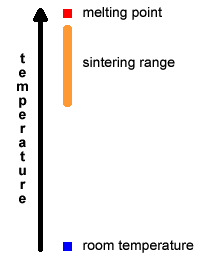
Sintering involves heating the metal clay to a point where the metal particles stick to each other—like welding or fusing the particles together. The sintering temperature depends on the type of metal, the size of the metal particles in the clay, and the binder. The sintering temperature must always be below the melting point of the metal. Smaller particles will sinter at a lower temperature.
After metal clay pieces are fired, they contain tiny holes between the metal particles and are somewhat porousA porous material has holes like a sponge, and can absorb liquids.. Metal that has been melted, instead of sintered, forms a more regular pattern without these holes. Pieces made from metal clay will weigh less (are less denseDensity measures how heavy items of the same size are. Lead is more dense than feathers.) than pieces of made with traditional metalworking techniques. Metal clay pieces are also not as strong as the original metals.
Some metal clay pieces may be quenched in water after firing, to cool them quickly. Since the fired piece is porous, it will absorb some of the water. If you heat a fired piece that still contains water, the water can cause it to blister (see PMC Tips: Blistering Metal Clay).
The final size and strength of a fired metal clay piece is affected by its composition (type of metal), size of the metal particles in the metal clay, firing temperature, and firing time.
The metal clay piece will have a dull surface after it has been fired. For instance, fired silver metal clay looks like it has a powdery white coating. This is because the surface is somewhat jagged on a microscopic level, which scatters light. If you plan to attach additional metal clay to the fired piece, this surface is best—it should not be polished first.
Metal clay pieces can be burnishedPolished or smoothed by rubbing with a tool., brushed, or polished to close the surface pores and create shine. The metal clay must be burnished before soldering, or much of the solder will be absorbed into these holes. Metal clay should also be tumbled or burnished before using liver of sulfur.
The shrinkage rate depends on the percent of water and binder in the clay. Clays with 10% shrinkage will contain close to 10% water and binder in the clay. Shrinkage is also affected by the size and shape of metal particles, since there will be holes between the particles after the clay is fired. The firing temperature and time also matter; higher temperatures and longer times lead to more complete sintering and more shrinkage.
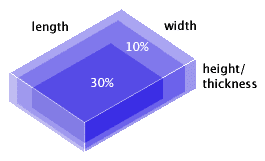
This diagram shows 10% and 30% shrinkage. Metal clay pieces shrink proportionally, or approximately the same amount in each direction. However, the piece will appear to shrink the most in length; for thin pieces, the thickness may not appear to change. If the piece varies in thickness or contains other items such as stones, the shrinkage may not be consistent throughout.
Note that if the piece is not fully sintered (not fired sufficiently), it will shrink less than expected. If you are firing a piece with a torch, you can determine whether the piece is completely fired by checking the shrinkage.